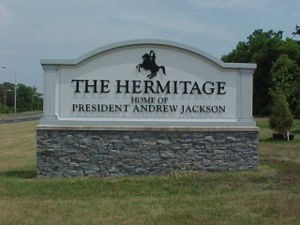 As I climbed onto the big yellow school bus last Monday morning, I tried to remember when was the last time I’d been on one. And how many years had passed since I’d taken a field trip with a group of children. My best guess was 1999, when son James’s sixth grade class spent a weekend at a wilderness camp in the Smoky Mountains.
As I climbed onto the big yellow school bus last Monday morning, I tried to remember when was the last time I’d been on one. And how many years had passed since I’d taken a field trip with a group of children. My best guess was 1999, when son James’s sixth grade class spent a weekend at a wilderness camp in the Smoky Mountains.
I quickly discovered that not a lot has changed in the years since then. The seat backs are higher and more padded, but a school bus is still a school bus. Open windows serve as the only air-conditioning. No one but the driver has a seat belt. The front door still makes that wonderful swooshing sound when it’s opened and closed, which happens at every railroad crossing.
And the kids are still as excited as ever.
I was travelling with the Jere Whitson Elementary School fourth graders, with whom I volunteer, to visit the Hermitage. It was going to be the perfect culmination of our study not only of Andrew and Rachel Jackson, but also of Tennessee trees and birds and flowers. As we’d talked about the trip a couple of weeks earlier, several of the students told me they looked forward to seeing Rachel’s beautiful garden and the tomb where she and her beloved husband are buried. Others wanted to see the furniture the Jacksons had actually sat and slept on. Still others were intrigued by the slave cabins and other outbuildings. So what did the first three students who boarded the bus say to me?
“Mrs. Ivey, do you know if there’s a gift shop at the Hermitage?”
I assured them there was but that shopping was NOT the point of the trip. Once the bus got rolling down I-40, I borrowed our driver’s microphone and tried to make the most of the seventy-something miles to our destination. I started by reminding the students that Donelson, Tennessee was named for Rachel’s family, who helped found Nashville back in 1780. We talked about how Jackson got the nickname “Old Hickory” at the Battle of New Orleans. We sang the Presidents song several times through, waving our hands in the air for Tennesseans Jackson, Polk and Johnson.
I shared with them my memories of visiting the Hermitage as a child. When I first toured the plantation in the 1960s, the mansion had not yet been electrified. We talked about the damage heat and humidity wreak on historic artifacts. I described how very cool it was to stand on the second floor balcony and gaze out at the cedar-lined, guitar-shaped driveway. I told about the time I stuck my head through the vertical rails of a wooden gate so that I could get a better look at the smoke house and then couldn’t pull it back out.
At last, we arrived.
First stop was the visitors’ center, which houses not only a café, restrooms and the gift shop but also a movie theatre and a wonderful museum. We toured the mansion but weren’t allowed out onto the second-floor balcony. We visited the detached kitchen and smokehouse, still closed off by a wooden gate with vertical slats, but which no one tried to stick a head through. We strolled to the spring house and Alfred’s slave cabin and through Rachel’s flower garden.
As usual, I was mightily impressed by those Jere Whitson fourth graders. They spotted and identified our Tennessee state flower (iris), bird (mockingbird) and tree (tulip poplar), which—as luck would have it–was in full bloom. They were polite, knowledgeable and wildly enthusiastic.
And as we climbed aboard the bus for the trip home, we all agreed that the gift shop was definitely NOT the highlight of our wonderful day at the Hermitage.
(May 17, 2015)
.